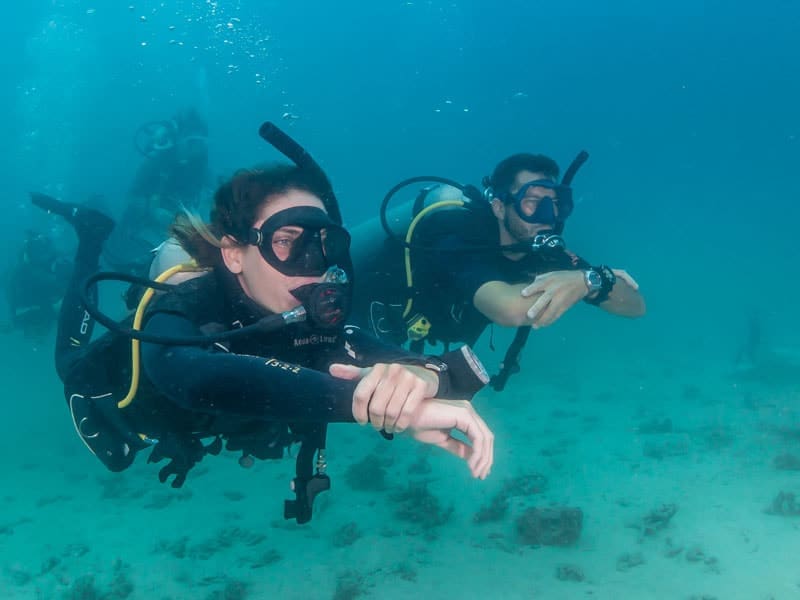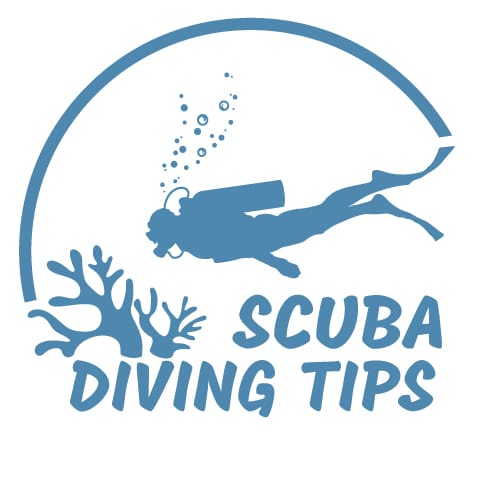PADI Divemaster Knowledge Review Chapter 3 Questions are explained on this page to help you understand the PADI Divemaster Knowledge Review Chapter 3 Answers.
Here I will explain all the PADI Divemaster Knowledge Review Chapter 3 Answers to help you understand all Divemaster Theory in the course. Please make sure you review this later with your PADI Instructor.

Question 1 – PADI Divemaster Knowledge Review Chapter 3 Answers
Question 1: What is your primary role as a professional assistant during training?
Your primary role includes managing logistics (e.g., organizing equipment, ensuring smooth transitions between activities) and supervision (e.g., keeping an eye on student divers who aren’t under direct instructor observation). This ensures that the instructor can focus on teaching and evaluating skills while maintaining a safe and efficient learning environment.
Question 2 – PADI Divemaster Knowledge Review Chapter 3 Answers
Question 2: Identify your possible functions during training (choose all that apply):
- Supervising equipment distribution and collection: Ensures all divers have the right gear and that it is stored properly post-dive.
- Supervising divers not being directly observed by the instructor: Adds an extra layer of safety for students in different areas of the dive site.
- Handling logistics: Keeps training flowing smoothly by coordinating diver flow and session timing.
- Conducting experience dives: Guides divers during the “tour” portion, allowing them to practice skills in a controlled yet realistic setting.
- Providing feedback to the instructor: Helps identify individual student needs and performance issues for better instructional focus.
- Checking divers in and out of the water: Tracks who is in the water, ensuring no one is left behind.
- Assisting students with learning challenges: Offers one-on-one support for students struggling with skills, boosting their confidence and understanding.
Question 3 – PADI Divemaster Knowledge Review Chapter 3 Answers
Question 3: Why might students feel more comfortable sharing concerns with you rather than the instructor?
Students may perceive you as being closer to their level, making it easier to approach you with concerns. While instructors are seen as authority figures, you act as a bridge between the instructor and students, helping to address issues that students might hesitate to bring up directly with the instructor.
Question 4 – PADI Divemaster Knowledge Review Chapter 3 Answers
Question 4: If the dive bottom is silty during training, which arrangement is best for minimizing disturbances?
Arranging students in a line with the instructor in the center and you positioned above and behind minimizes the risk of stirring up silt. This configuration allows for efficient skill rotation while keeping the dive area undisturbed, ensuring visibility for both the instructor and the students.
Question 5 – PADI Divemaster Knowledge Review Chapter 3 Answers
Question 5: Is holding the BCD at the shoulder or low on the outside a good method for making direct contact with a student?
True. This method ensures you maintain control over the diver’s movements without compromising their comfort or safety. Holding the BCD at the shoulder or lower side allows for a secure grip while avoiding invasive or restrictive contact.
Question 6 – PADI Divemaster Knowledge Review Chapter 3 Answers
Question 6: What are your duties as a professional assistant for entry-level training? (Choose all that apply):
- Supervising the group: Allows the instructor to focus on one student while you monitor the rest for safety and readiness.
- Leading the group: Ensures proper direction and flow during training sessions.
- Assisting with paperwork: Reduces the administrative burden on the instructor.
- Enforcing safety rules: Keeps the training environment safe and orderly.
- Handling equipment: Ensures students have correctly set up and functioning gear, reducing delays and potential issues.
Question 7 – PADI Divemaster Knowledge Review Chapter 3 Answers
Question 7: Why might you demonstrate a skill? (Choose all that apply):
- When the skill requires two people: For example, buddy-assisted skills like alternate air source sharing require both the instructor and an assistant.
- To redemonstrate for a student with difficulties: Seeing the skill demonstrated again can help a struggling student understand proper techniques and improve.
Question 8 – PADI Divemaster Knowledge Review Chapter 3 Answers
Question 8: What is the most important factor in developing demonstration-quality skills?
Practice. Watching demonstrations and videos is helpful, but consistent hands-on practice builds muscle memory, confidence, and the ability to perform skills flawlessly under pressure.
Question 9 – PADI Divemaster Knowledge Review Chapter 3 Answers
Question 9: Do you only need the 20 basic skills from entry-level training and 4 skills from skin diving training at demonstration quality?
False. While these skills form the foundation, you may need demonstration-quality proficiency in other skills depending on the program or situation. Expanding your skillset ensures you can support advanced or specialty training effectively.
Question 10 – PADI Divemaster Knowledge Review Chapter 3 Answers
Question 10: If a student struggles with regulator recovery and clearing, what is your first step?
Redemonstrating the skill is often the best first step. By showing the correct technique, you provide a visual example for the student to follow. This approach is less intimidating than pointing out errors or having the student attempt the skill without understanding what they’re doing wrong.
Question 11 – PADI Divemaster Knowledge Review Chapter 3 Answers
Question 11: Where can you find specific requirements for working with children?
Both the Professional Membership Guide and Child Protection Guidelines outline requirements for working with children. These resources cover safety protocols, legal considerations, and best practices for interacting with minors in diving programs, ensuring compliance and safeguarding the well-being of young participants.
Question 12 – PADI Divemaster Knowledge Review Chapter 3 Answers
Question 12: Should you allow a student to handle a problem themselves unless safety or logistics require intervention?
True. Allowing students to work through problems fosters independence and critical thinking. However, you should step in immediately if safety is compromised or if the problem hinders the flow of the session.
Question 13 – PADI Divemaster Knowledge Review Chapter 3 Answers
Question 13: When assisting a student with physical challenges, where should your focus be?
Focus on what the student can do. Emphasizing their abilities rather than limitations builds confidence and encourages them to approach skills with a positive mindset. Adapt techniques to their strengths to ensure success without drawing unnecessary attention to their challenges.


Leave a Reply